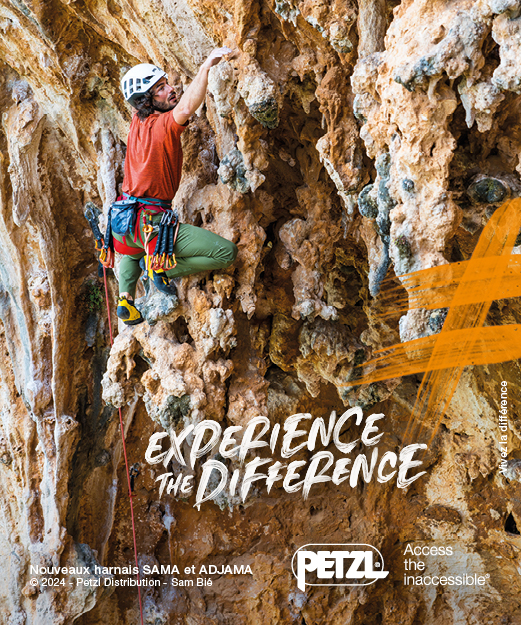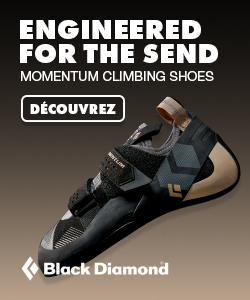La Sportiva climbing shoes : a story about craftmanship

La Fabrique Verticale recently visited the La Sportiva factory. It was an incredible opportunity to get a closer look at all of the stages that go into making these world famous climbing shoes from Italy. From design brainstorming to placing the finished product in boxes, we learned all about prototypes as well as the assembly process. Before our very eyes, prestigious models like the Testarossa, Skwama and Solution came to life… You can only imagine how amazed we were!
La Sportiva is one of the last climbing shoe companies to produce the entirety of its product line in Europe. The decision made by many other companies to move production to China or Romania in order to cut costs sometimes impacts the quality of the product… With the exception of one or two entry-level models made in Asia, all other La Sportiva shoes, whether they are high performance models or not, are still made by hand in the small village of Ziano di Fiemme, located in the heart of the Dolomites.

It is pretty impressive to think that every pair of La Sportiva shoes sold around the world began their journey by truck in this narrow mountain valley with its steep and winding roads. This is also interesting because of the fact that 82% of the brand’s production is for export to nearly 70 countries around the globe. The assembly lines and enormous warehouses are impossible to detect because they are located underground beneath headquarters. We couldn’t help feeling like we had entered the secret lair in a James Bond movie!

While La Sportiva has tripled its turnover during the last decade to become a global leader, the spirit of the company remains one of a family owned and operated business. Every step is done by hand, in Italy, on the assembly line. Depending on the complexity of the model and specific production needs, 800 to 1,000 pairs of shoes are produced daily in the workshops. But behind this astounding figure are the men and women who employ artisanal craftsmanship regardless of the industrial nature of the production process.

Secret Defense
We are familiar with the Italian brand’s taste for design and precision during the R&D phase. Yet when we penetrate deeper into the core, inside the super secret process of shoe assembly, we are left surprised. Our preconceived notions about the production of piedi di gatto (the Italian expression for describing our good old climbing shoes, literally “cat paws”) are deconstructed and rethought.
We had imagined a super automated process, consisting of some sort of giant machine into which go all of the raw materials- from the quarter and tongue leather to the sticky rubber for soles. But we learned that, actually, each step is done manually. We thought we were going to be overwhelmed by the odor of glue and heated rubber. However, a powerful ventilation system provides clean air in the workshop. We had dreamed of robots and instead found men and women dutifully working away.

There are two production lines where 160 employees work together to assemble shoes. Sixty percent of the employees consider themselves climbers! Some are specialized to work with certain details and specific machines; others rotate through different parts of production. This system of distributing work helps to avoid muscular and skeletal injuries that are common among factory workers who perpetually repeat the same movements.

Over an hour for assembly and three hours of drying!
We often hear climbers complaining about the cost of shoes. There is no question that acquiring a performance model requires a considerable investment. Yet when we look at the time needed to craft the product, the price is far from outrageous. From the conceptualization to the design plan, it commonly takes more than a year to create a model, as was explained to us by Pietro dal Pra. This is in part due to the substantial number of prototypes that are costly to produce and test.

A good example is the Futura, a model that counted 72 prototypes before becoming its final market version. Beyond the R&D phase is also the attention to detail during production, as well as the careful selection of raw materials, all of which contribute to the finished product’s cost. Not to mention the quality control phase which eliminates any shoes that have the smallest of imperfections! Every step of production – and there are many! – takes time.

The steps includes: cutting the leather, the construction of the upper shoe with a sewing machine, joining the different layers of the sole or the interlayers that make up the structure of the shoe and heel, gluing the insole or the sticky rubber, the precise heating of the rubber that allows perfect adhesion to leather, drying, finishing and boxing after quality control… No less than 4 hours are spent from the moment a shoe enters production to it being stocked in the warehouse. Wow!

A century of passion
The assembly line here feels more like a beehive than a factory, with every individual doing their part to contribute to the final product. If industrialization was conceived to achieve optimum efficiency in production, manufacturing here has kept its human character and is built on passion. Every step of the way, we witnessed a constant endeavor to apply the utmost artisanal approach to their craft. Even the leather that makes up the upper shoe is tanned in Trento, not far from the factory. There are no exceptions to La Sportiva’s family-based approach, and behind La Sportiva is a dynasty named Delladio!

The great grandfather and shoemaker, Narciso, started making his first moutain shoes in 1928 in his small workshop, developing an innovative lace system that has long since served as the model in mountain shoe production. His son, Francesco, came into the business in the 1950s and developed leather ski boots for a market that was becoming more and more technical.
The third and current generation is managed by Lorenzo who made his mark by introducing his first technical climbing shoes, which were light, supple, and ahead of their time. And now his daughter, Giulia, is also apart of the company. Giulia has pushed for the brand to diversify and integrate into new markets, like trail running and clothing. We can say it is truly a family affair!
At the other end of the line
When we see the best climbers in the world sending 9a and 9b with La Sportiva shoes on their feet, we don’t initially take into account all of the work that was necessary to create these precision weapons! During our visit, we also had the chance to watch Adam Ondra climb at the beautiful Val di Fassa gym, very near to La Sportiva headquarters, where the next European championships will be held in July.

We were obviously impressed by his graceful movement and simplicity. What was also intriguing were all of his ideas and observations on shoes, which he communicated to the brand’s three designers: Pietro Dal Pra, Matteo Jellici and Luca Gabrielli. Sponsoring is not a one way street. It allows for a dialogue between the athlete and the brand, inspiring new ideas and concepts. And now for the 20 year anniversary of the famed Miura, a special Adam Ondra pro model addition of the shoe will be released this year.

Essentially, the flagship product of La Sportiva is being totally remastered. Yet on this day, it wasn’t with this new Miura model that Adam was cranking down on 8c holds. He was wearing a prototype that had the color of the Solution, the precision of the Solution, but was not the Solution! What the story here won’t reveal is the name of this next model from La Sportiva 😉










No Responses
[…] Family, represented today by CEO Lorenzo Delladio and his daughter Giulia, who have continued the family business leading it to today’s success. Imagine : over three hundred employees. A growing turnover that […]